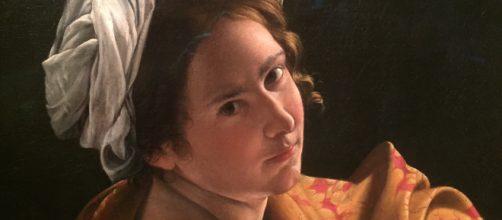I don't expect a nation known for female crowned heads to slight women. But merry old England has a history of disregarding those who are artists. Great Britain took years to outgrow gender bias. Now, Tate Britain wants to rectify the snub by spotlighting female work held in its collection since the 60s. But here's the thing. While Tate Britain is celebrating Art by women, it's late to the party.
The story of turning a blind eye to female artists has already been told by other British art institutions and in more enlightening ways. The way Tate Britain director Alex Farquharson characterized the effort on the museum website, you'd think he discovered the wheel: “This presentation will offer a significant moment to recognize and celebrate a selection of Britain’s most important artists working from the 1960s to the present day." Where has he been all this time?
The story of sexism in the British art world is hardly breaking news.
Let's party
Consider the Royal Academy of Art, which was established 251 years ago. It took a century after the opening of the school for a woman to be accepted as a student. As historian Charlotte Yeldham noted in her 1984 tome “Women Artists of the 19th Century,” Laura Herford hid her gender from the acceptance committee by using only her initials when submitting her portfolio. Even after Herford got into the Royal Academy, it took another 30 years for women to be admitted. And get this: two of those allowed entries - Mary Moser and Angelica Kauffmann - were among the founders of the school.
Mix and match
Despite the Royal Academy record of sexism, it still beats Tate Britain's record.
Three years ago, the academy mounted a show of 85 works made between 1400 and 1530 with an equal split of exhibit examples by male and female artists. See? Rather than mount a show that made gender the main idea, as Tate Britain does, the academy looked at how both genders in Renaissance Europe made art.
Headline-worthy
The National Gallery of London also beats Tate Britain when it comes to recognizing women artists.
Although long known for only one percent of its collection by women, four years ago, for the first time in 27 years, it bought a self-portrait by Renaissance painter, Artemisia Gentileschi.
All that said, England's art institutions have a lot of catching up to do. The French Royal Academy first accepted a female student (Louise Moillon) in the 17th century.


